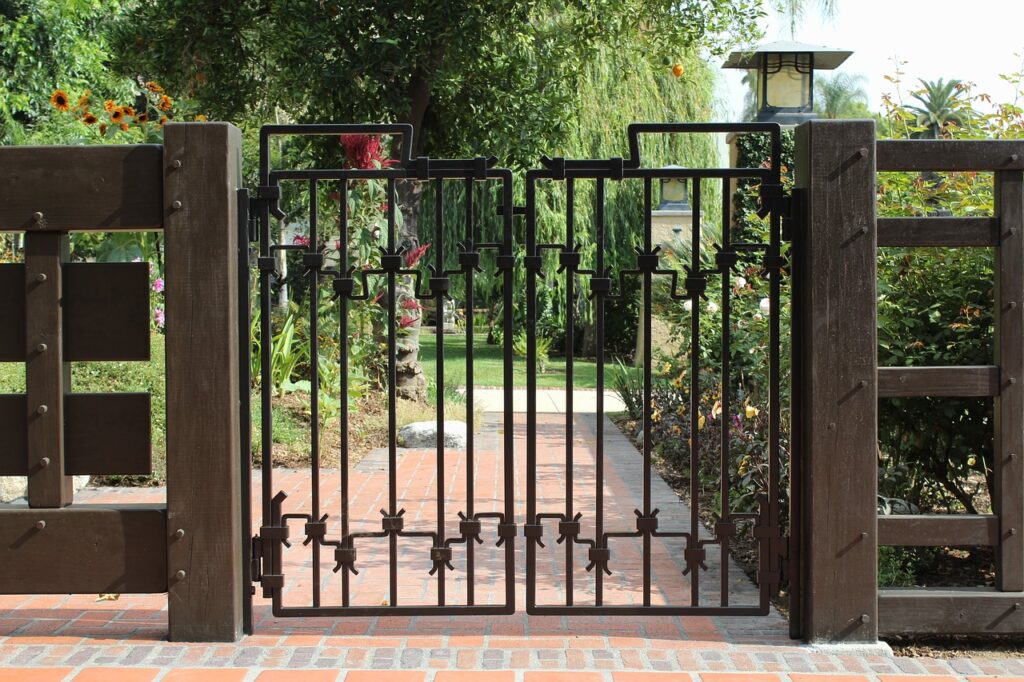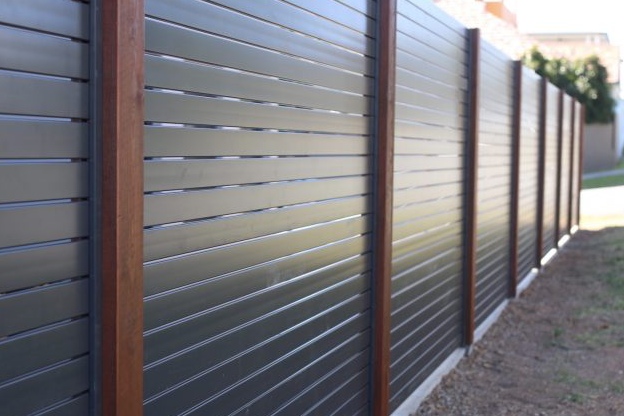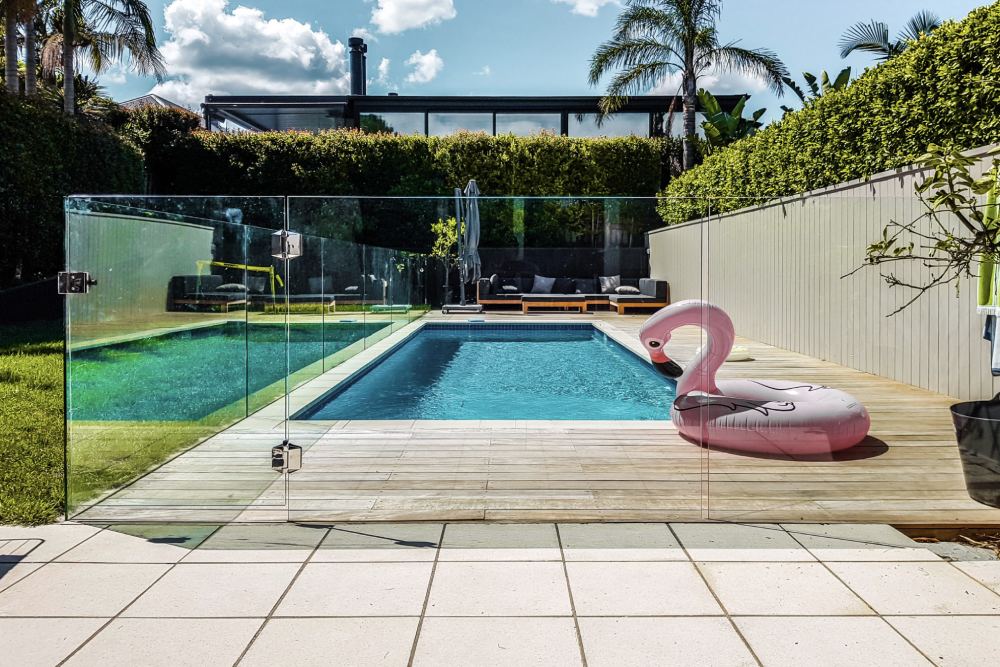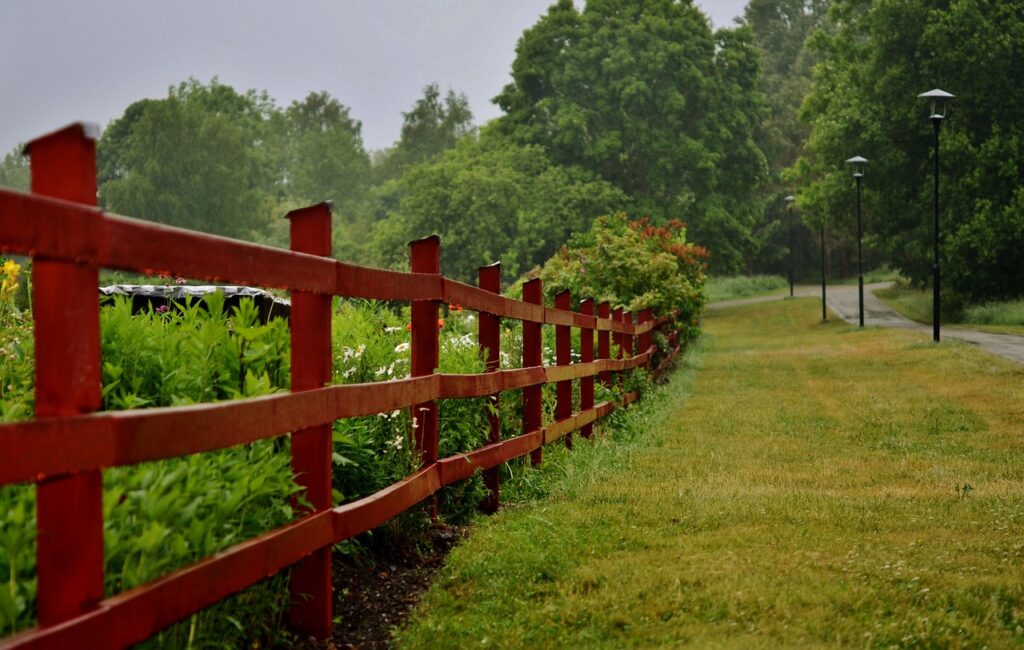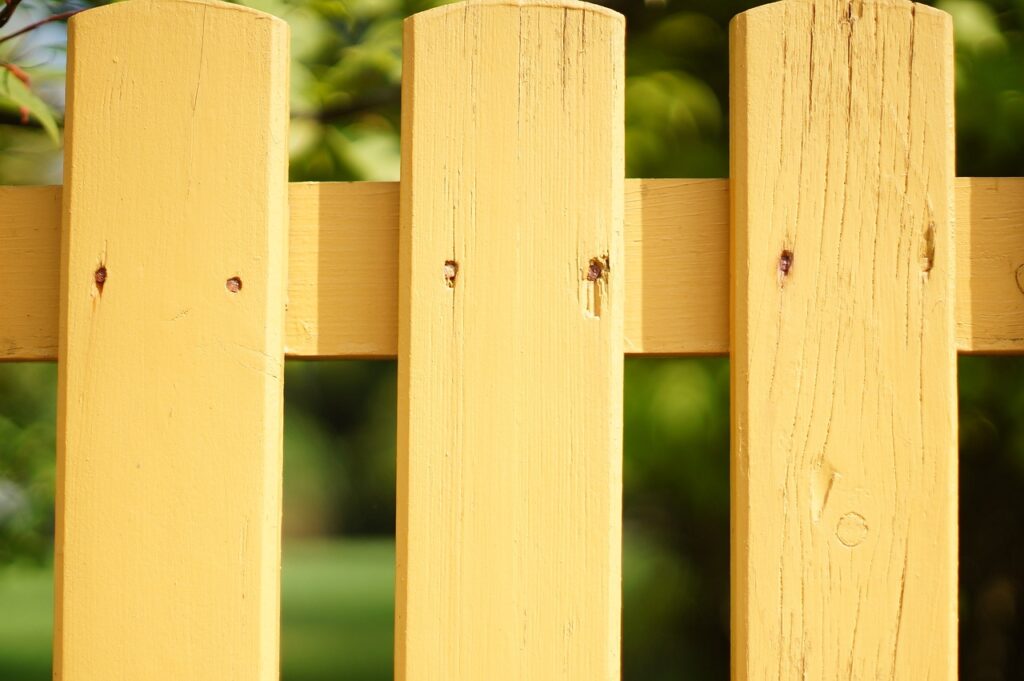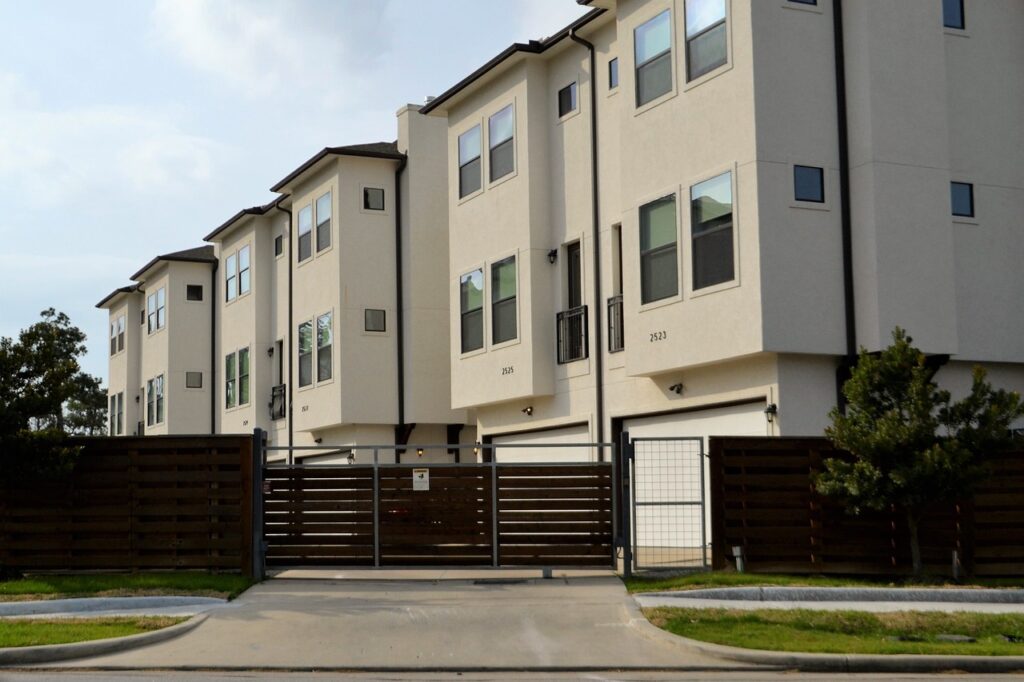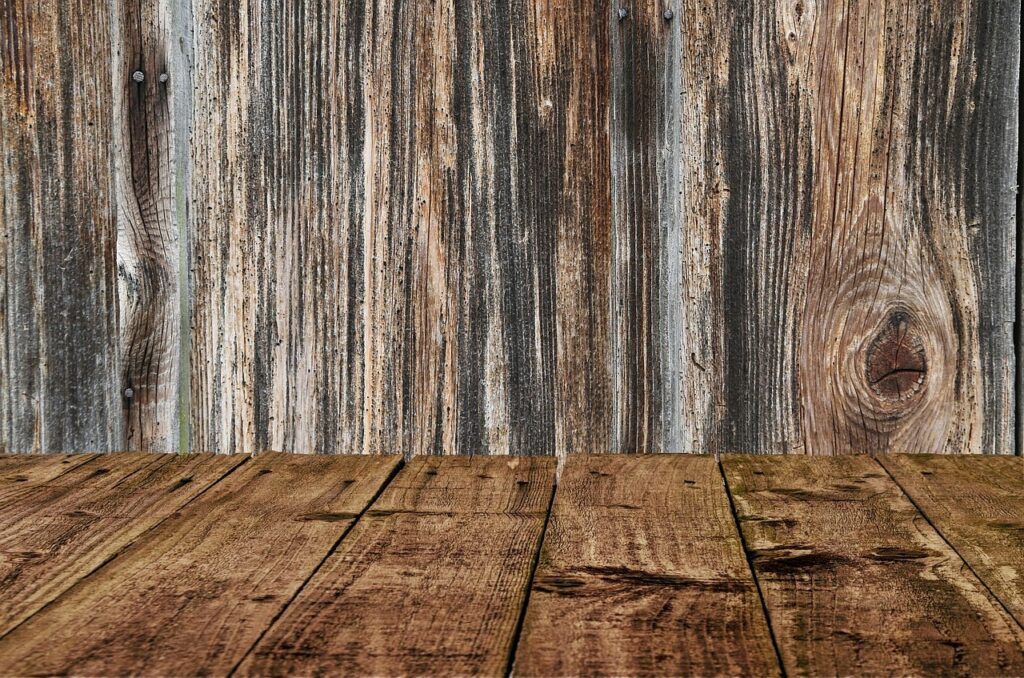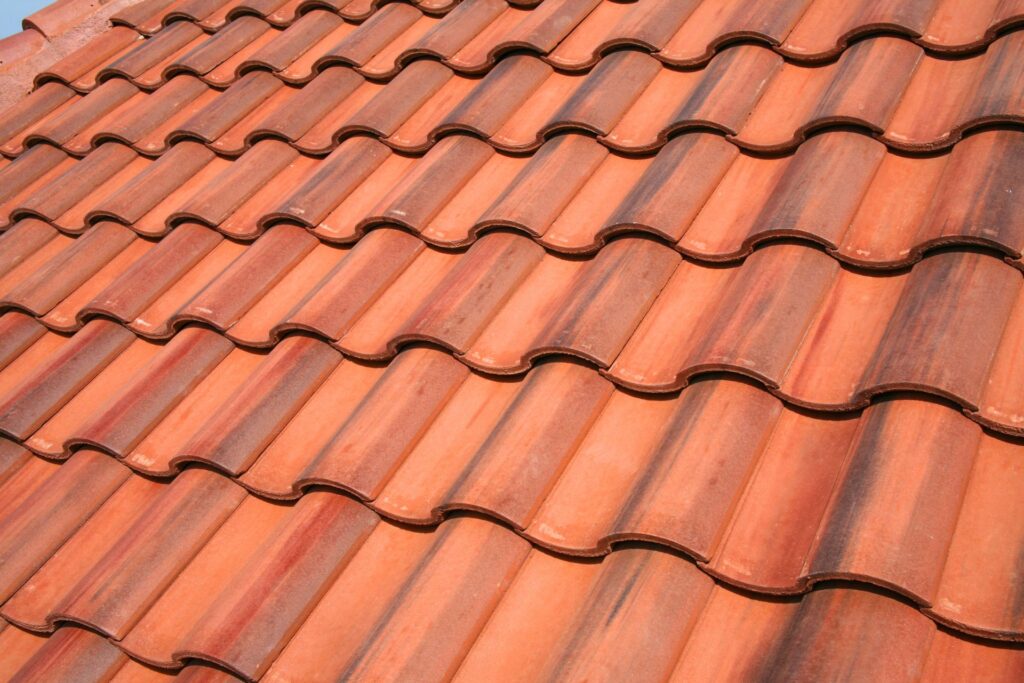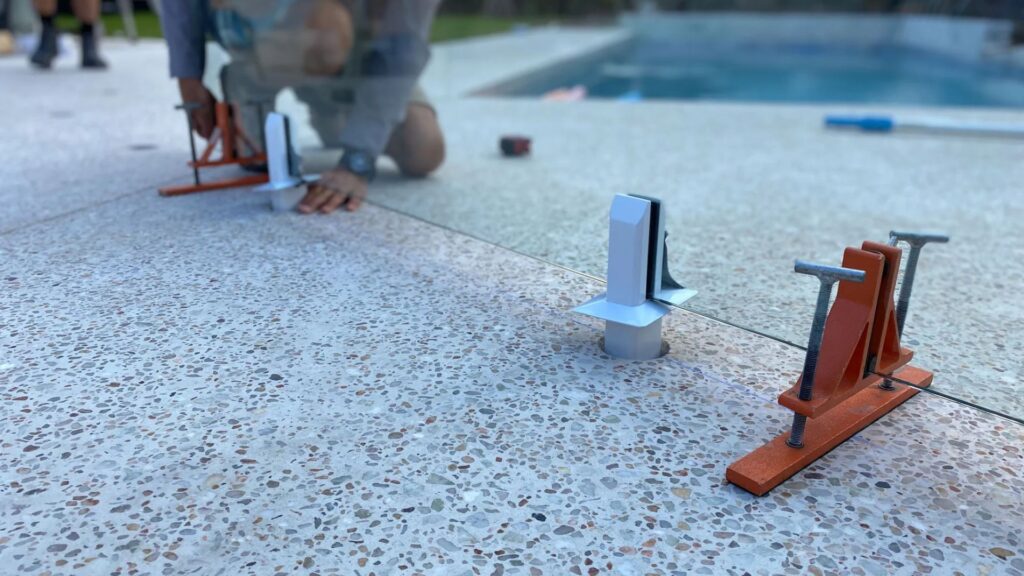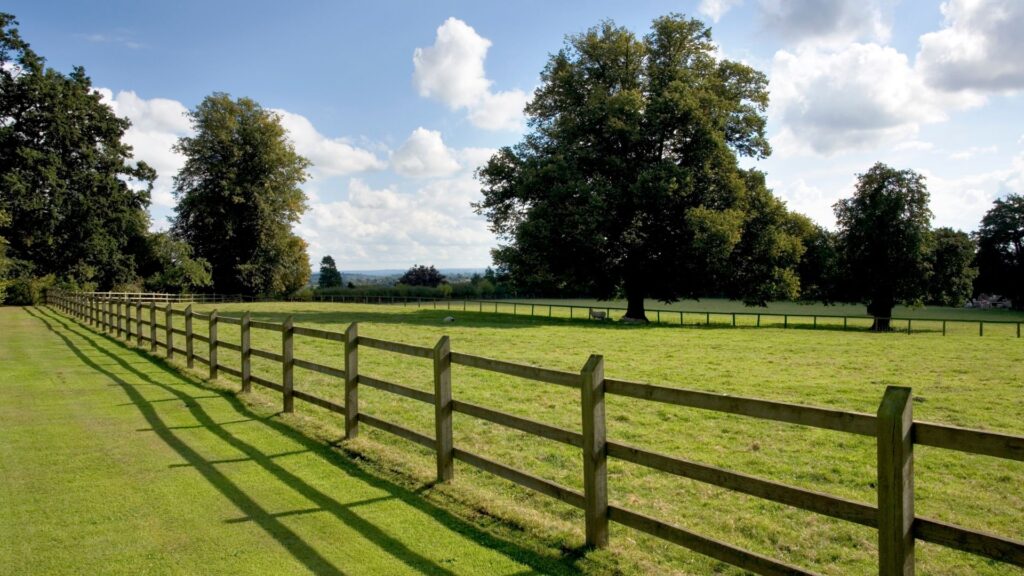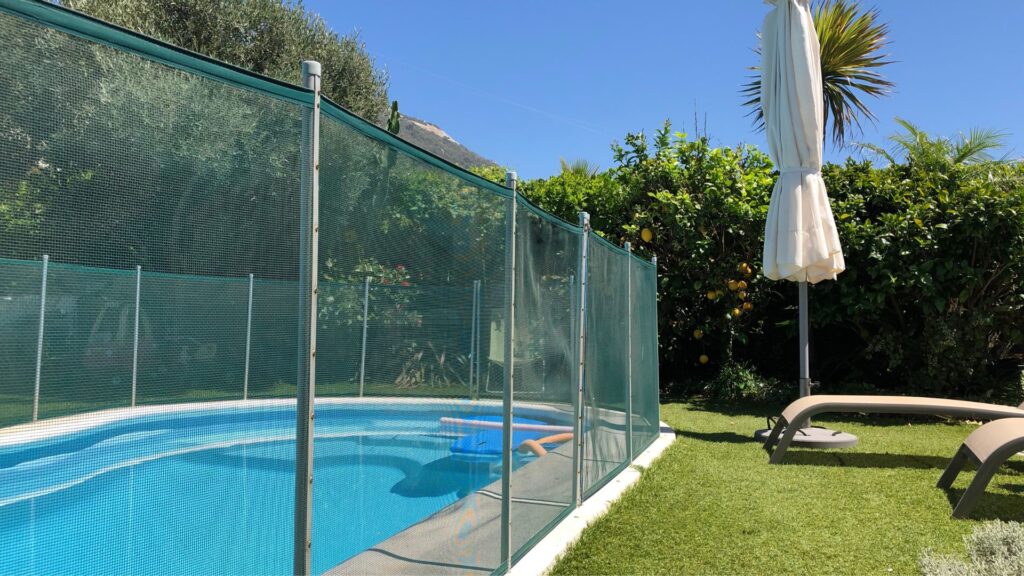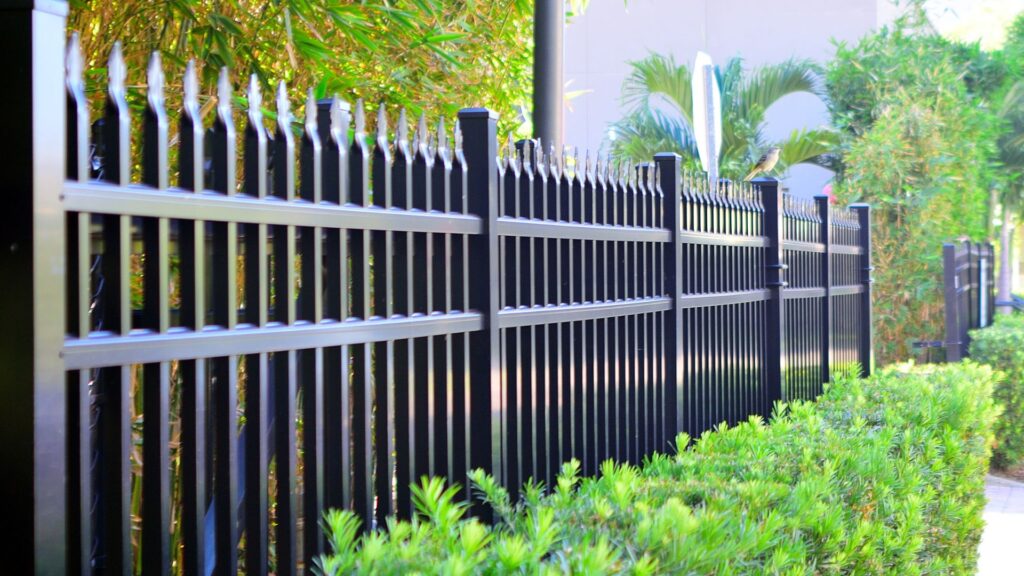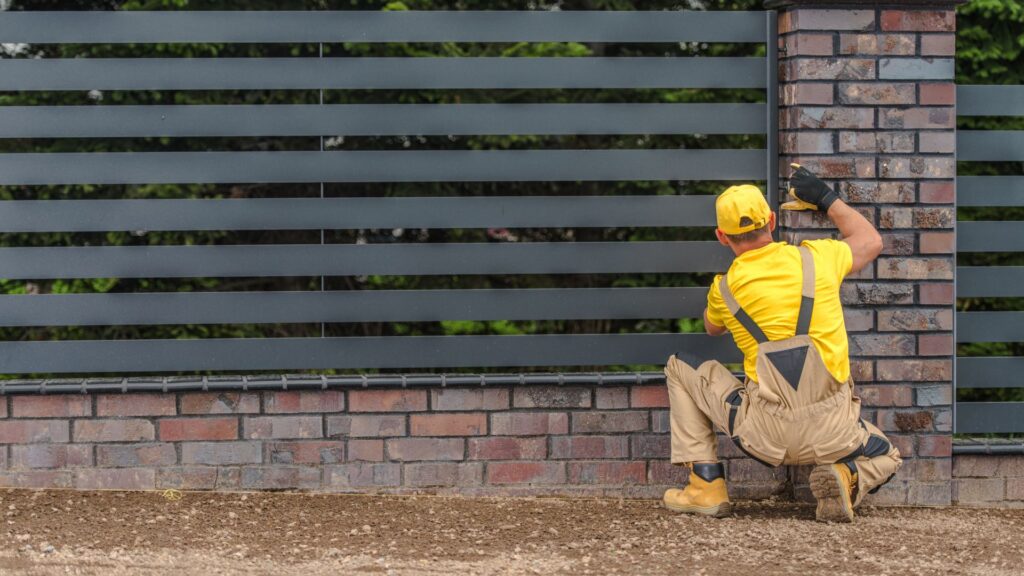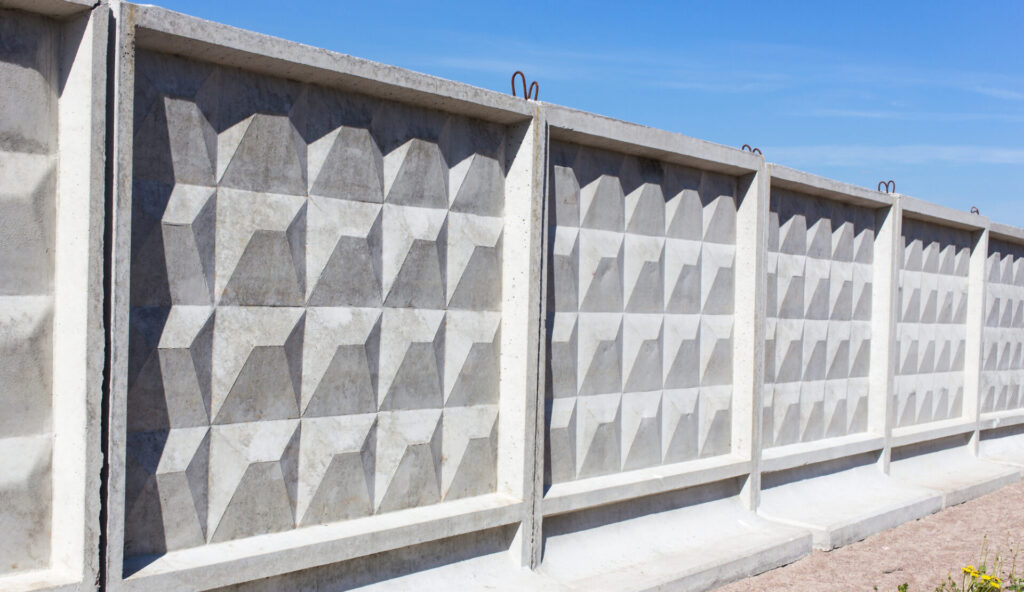In New Zealand, fencing transcends its primary function of marking property boundaries to become a significant expression of privacy, security, and personal style. For homeowners venturing into the realm of fencing, whether it’s encircling a suburban backyard, a vast rural expanse, or a compact urban plot, the deliberation over the ideal number of gates becomes crucial. This decision intricately weaves together practicality and aesthetic appeal, requiring careful thought about daily accessibility, potential needs for larger entry points for maintenance or emergencies, and the impact on the property’s overall appearance.
As such, navigating the choice of how many gates to incorporate into a fence involves a harmonious blend of functionality and design, aiming to enhance both the ease of access and the visual appeal of the home’s exterior. This guide seeks to assist New Zealand homeowners in making informed decisions that balance these aspects, ensuring their fencing not only meets practical demands but also reflects their unique style and complements the architectural theme of their property.
In New Zealand, the number of gates a fence should have depends on several factors including the property’s layout, the purpose of the fence, security needs, and aesthetic preferences. Generally, residential properties benefit from at least two gates: a main entrance gate and a service or side gate for convenience and safety. For larger properties, or those with specific needs like pool access or enhanced security, additional gates may be necessary. Always consider local council regulations and consult with professionals to ensure your fence and gate setup meets legal requirements and personal needs effectively.
- Understanding The Basics Of Fence Planning In NZ
- Factors To Consider When Deciding On The Number Of Gates
- Common Configurations For Residential Fences In NZ
- How Many Gates Should Your Fence Have?
- Installation Tips For Gates In Fences
- Maintenance And Upkeep Of Gates And Fences
- Legal And Neighborly Considerations In NZ
- FAQs: Fencing And Gates In New Zealand
- Conclusion
- Find A Professional Fence Builder Near You!
Understanding The Basics Of Fence Planning In NZ
Embarking on a fencing project requires meticulous planning beyond just choosing materials and designs; it involves understanding legal and communal norms to lay a solid foundation. It’s essential to align your project with the Fencing Act in New Zealand, which provides guidelines for erecting shared fences, and to familiarize yourself with local council regulations regarding fence heights, designs, and gate placements. Being informed can prevent disputes and costly modifications.
Additionally, engaging in dialogue with neighbors about fencing plans fosters positive relationships and can lead to shared insights or resources, adhering to the Fencing Act’s spirit of mutual agreement. Understanding the environmental impact and choosing eco-friendly materials also contributes to a sustainable outcome, ensuring your fencing project is not only legally compliant and aesthetically pleasing but also community and environmentally respectful.
The Role Of Gates In Fencing
Gates serve as much more than mere entry and exit points; they are central to a fence’s functionality, security, and aesthetic appeal, defining the character of a property right from the first point of interaction. A well-chosen gate, whether it’s an elegant wrought iron design that exudes sophistication or a simple wooden gate offering rustic charm, can significantly impact the property’s visual appeal.
Beyond aesthetics, gates enhance security, deterring unauthorized access with options for electronic locks, surveillance cameras, and intercom systems, especially in gated communities where they control access and ensure a secure environment. Additionally, gates can embody the cultural and historical essence of a place, reflecting traditional designs that celebrate architectural heritage and local craftsmanship.
This multifaceted role makes gates an indispensable component of fence systems, emphasizing their importance in enhancing property value, security, and aesthetic appeal while echoing the cultural significance of their surroundings.
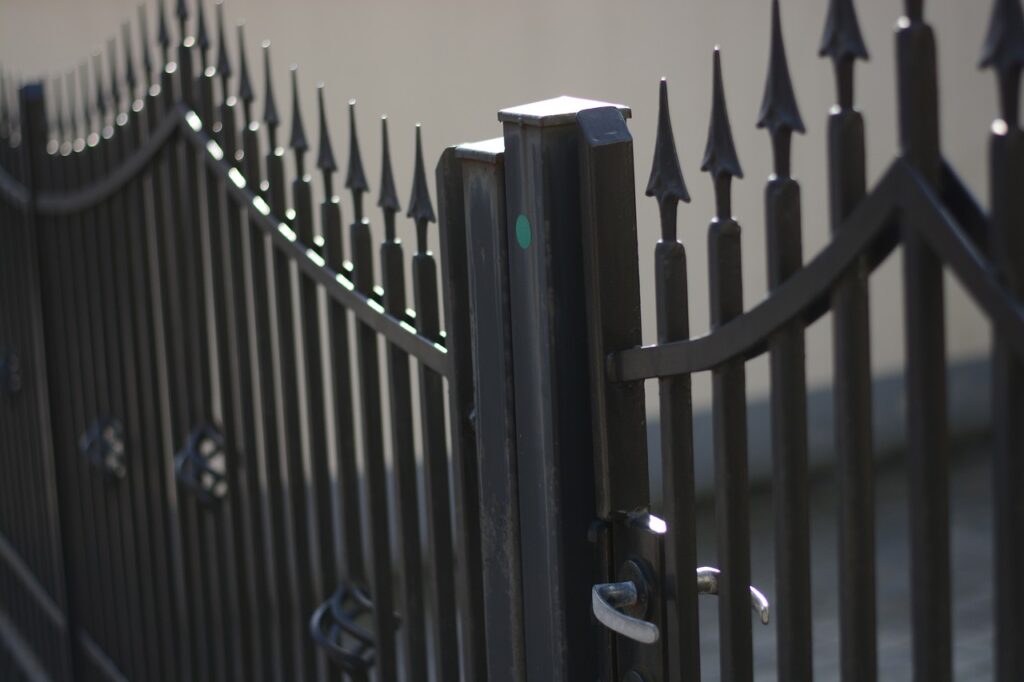
Factors To Consider When Deciding On The Number Of Gates
Several factors influence the number of gates you might need:
Location and Purpose of the Fence
When enhancing your home’s exterior, adding a front yard fence can significantly boost curb appeal, with a pedestrian gate serving as a charming entryway that adds visual appeal and ensures easy access for guests and family. It’s an opportunity to make a welcoming statement while subtly marking property boundaries, with designs and materials that complement your home’s architectural style for a cohesive look.
Meanwhile, in the backyard, priorities often shift towards privacy and security, making it beneficial to incorporate both pedestrian and utility gates. The pedestrian gate facilitates convenient individual access, ideal for gatherings or leisure, while a utility gate allows for the entry of vehicles and lawn equipment, supporting larger projects by moving materials in and out of the yard.
This dual-gate setup not only secures and maintains the functionality of your property but also turns your backyard into a private sanctuary for relaxation and entertainment, enhancing the overall value and appeal of your home.
Property Size and Layout
When considering the installation of multiple gates for large properties or those with multiple access points, it’s also crucial to think about the practicalities of daily use and security. For example, strategically placing gates can streamline the flow of traffic, making it easier for vehicles and pedestrians to enter and exit the property without bottlenecks. Additionally, the right gate placement can enhance security by controlling access points and monitoring who comes and goes. It’s about finding the perfect balance between convenience, aesthetics, and safety to ensure that your property remains both welcoming and secure.
Security Concerns
Ensuring the safety and security of a space, especially in areas sensitive to unauthorized access, requires careful consideration of how entry and exit points are managed. By limiting the number of access points, you not only simplify the monitoring process but also significantly reduce the risk of security breaches.
Equipping these few, carefully chosen entrances with advanced locking systems that might include biometric scanners, key card access, or even smart locks, further fortifies the premises against potential intruders. This approach not only ensures a higher level of security but also instills a sense of safety among those within the space, knowing that access is diligently controlled and monitored.
Aesthetics and Design
When considering the addition of gates to your property, it’s also important to think about their practicality and functionality. Gates serve as both an entry and exit point, so it’s essential to ensure they are accessible and user-friendly for both guests and residents. This means considering the size, the opening mechanism (manual or automatic), and how they integrate into the security system of your home.
A well-thought-out gate can enhance the convenience of accessing your property while maintaining security and privacy. Integrating your gates seamlessly with the aesthetic of your fence and home not only adds to the visual appeal but also to the overall harmony and flow of your property’s design.

Common Configurations For Residential Fences In NZ
In the picturesque landscapes of New Zealand, the approach to fencing and gate configurations showcases a fascinating variety that mirrors the country’s diverse living environments. From the bustling urban centers to the tranquil rural expanses, homeowners in New Zealand tailor their fencing solutions to meet both functional needs and aesthetic desires.
In the suburban areas, where homes nestle closely together, the choice of fencing and gate design is often a thoughtful combination that serves multiple purposes. Pedestrian gates are a common sight, offering a welcoming entry point for guests, while simultaneously ensuring security for the residents. These gates often exhibit a blend of style and practicality, with designs that complement the architectural features of the home. Driveway gates accompany these pedestrian entrances, providing secure access for vehicles. These gates are not just functional elements; they also contribute to the overall curb appeal of the property. Homeowners carefully select materials and designs that enhance the visual harmony of their front yards, turning these practical installations into statements of personal style.
Moving to the rural areas of New Zealand, the fencing and gate requirements shift significantly. The vast landscapes and sprawling properties necessitate larger gates, designed to accommodate a variety of needs. Vehicle gates in these areas are built to allow easy access for farm equipment and trucks, essential for the daily operations of a rural lifestyle. Livestock movement is another critical consideration, with gates and fencing designed to safely and efficiently manage animals across different parts of the property. These gates are robust and functional, but that doesn’t mean aesthetics are overlooked. Many rural property owners choose designs that reflect the natural beauty of their surroundings, creating a seamless integration between man-made structures and the natural environment.
In the heart of New Zealand’s urban areas, space becomes a premium commodity, influencing the design and functionality of fencing and gates. Urban homes, with their compact footprints, often prioritize pedestrian gates that maximize space efficiency. These gates ensure secure access to the property, with designs that enhance the home’s security without sacrificing style. The focus on pedestrian gates in urban settings reflects the lifestyle of city dwellers, who may rely more on public transport or walking, reducing the need for large driveway gates. However, where space permits, homeowners might still incorporate driveway gates that blend security with modern design elements, adding a layer of privacy and safety in the bustling city environment.
In essence, the varied fencing and gate configurations across New Zealand are a testament to the country’s adaptability and attention to both form and function. Whether in a suburban setting, a rural landscape, or the heart of an urban center, New Zealanders approach their fencing solutions with a keen eye for detail, ensuring that these practical necessities also serve as extensions of their personal style and the unique character of their homes.
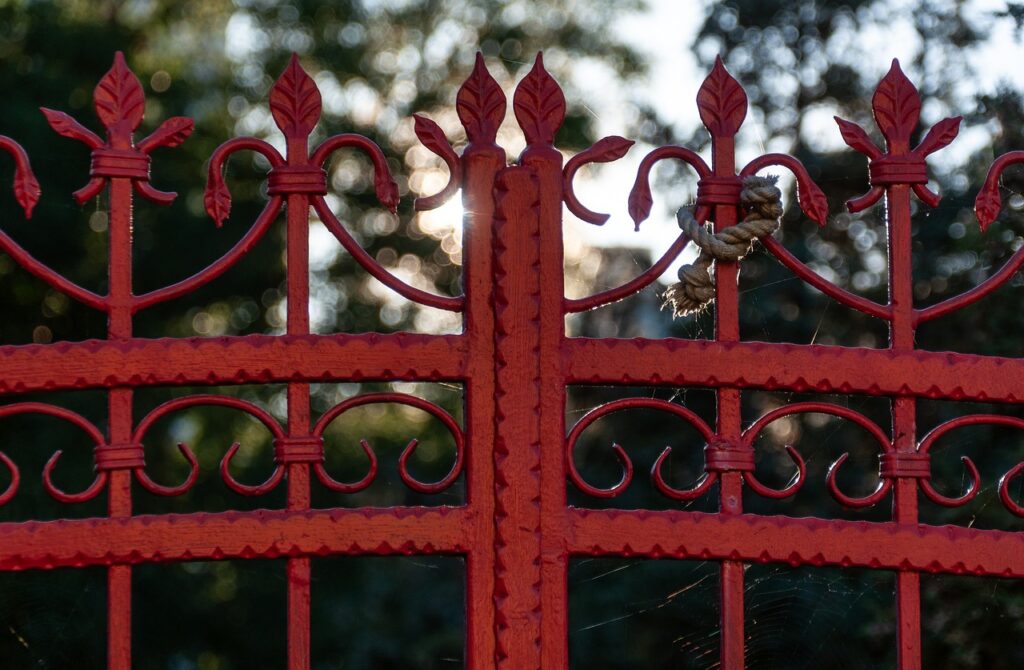
How Many Gates Should Your Fence Have?
When considering the installation of gates on your property, it’s essential to assess the nature of your requirements and the spatial dynamics of your premises. If your property is compact or your access needs are straightforward, a single gate could be the most efficient and cost-effective solution. It streamlines entry and exit, making it a straightforward choice for smaller setups. On the other hand, for expansive properties or those with complex access dynamics, opting for multiple gates can significantly improve functionality.
Multiple gates allow for the segregation of access points based on different needs, such as a separate gate for deliveries, another for personal use, and perhaps another for service personnel. This not only enhances security by controlling who enters through which gate but also aids in managing traffic flow within the property, preventing bottlenecks and ensuring smoother operation.
Case Studies: Examples from New Zealand Homes
Consider a suburban home in Auckland that uses a single large driveway gate for vehicle access and a separate pedestrian gate for visitors, combining security with convenience. Alternatively, a rural property in Canterbury might have multiple gates along its boundary for different purposes: a main driveway gate for vehicles, smaller pedestrian gates for easy access to different parts of the property, and utility gates for farm equipment.
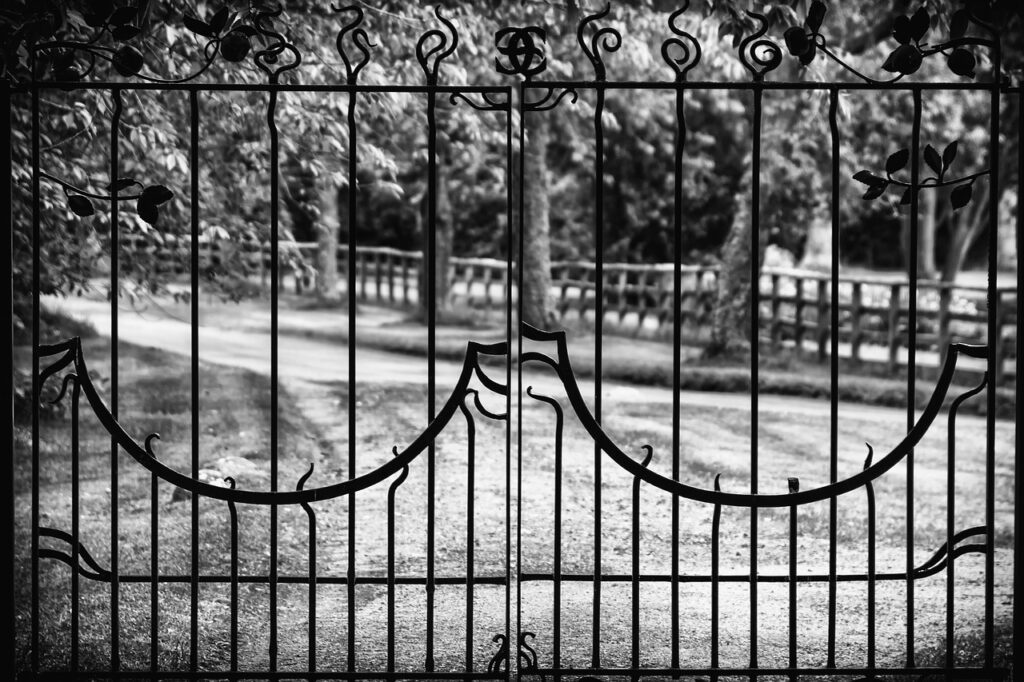
Installation Tips For Gates In Fences
When it comes to enhancing the security and aesthetic appeal of your property, installing gates in fences is an indispensable step. Whether you’re aiming to safeguard your home, define the boundaries of your property, or simply add a touch of elegance, the right installation can make all the difference. This guide offers comprehensive tips on installing gates in fences, designed to ensure durability, functionality, and style. By adhering to these insights, you’ll not only elevate the look of your property but also potentially increase its value.
1. Planning and Preparation
Identify Your Needs: Begin by assessing your specific requirements. Are you looking for privacy, security, or merely a decorative addition to your garden? Your objective will significantly influence the type of gate and materials you choose.
Select the Right Material: Gates can be constructed from a variety of materials, including wood, metal (such as wrought iron or aluminum), and vinyl. Each material offers distinct advantages in terms of durability, maintenance, and aesthetic appeal. Consider the climate in your area and the level of maintenance you’re willing to undertake.
Measure Accurately: Accurate measurements are crucial. Measure the opening for the gate, not forgetting to allow space for hardware and for the gate to swing open or slide. It’s also essential to consider the slope of the ground, which may affect the installation process.
2. Choosing the Right Gate
Swing vs. Sliding Gates: The choice between swing and sliding gates depends on the available space and the slope of your driveway. Swing gates require space to open inward or outward, while sliding gates are ideal for properties with limited space.
Hardware Selection: The right hardware is critical for the longevity and functionality of your gate. Opt for weather-resistant hardware, especially if you’re in an area prone to harsh weather conditions. Hinges, latches, and locks should be sturdy and compatible with the type of gate you’ve chosen.
Automation Features: If convenience is a priority, consider automating your gate. Automated gates offer enhanced security and ease of use. Choose a reliable system that comes with safety features to prevent accidents.
3. Installation Process
Setting the Posts: The posts are the foundation of your gate and must be set correctly. Use a post-hole digger to create holes that are deep enough to support the weight of the gate – typically, one-third of the post’s length should be underground. Secure the posts with concrete, ensuring they are perfectly vertical and aligned with each other.
Attaching the Gate: Once the posts are set and the concrete has cured, it’s time to attach the gate. If you’re installing a swing gate, ensure the hinges are properly aligned and the gate is level. For sliding gates, install the track system according to the manufacturer’s instructions.
Final Adjustments: After the gate is installed, make any necessary adjustments to ensure it opens and closes smoothly. Install the latch and any additional security features, such as a padlock or electronic access system.
4. Maintenance Tips
Regular Inspections: Periodically check the gate and its hardware for signs of wear and tear. Tighten any loose screws and replace damaged components as needed.
Lubricate Moving Parts: Keep hinges, locks, and sliders well-lubricated to ensure smooth operation. Use a suitable lubricant recommended for the material of your gate.
Clean Regularly: Keep the gate clean from debris and buildup. Wooden gates may require resealing or painting to maintain their appearance and durability.
Installing a gate in your fence requires thoughtful planning, precise execution, and regular maintenance to ensure it serves its purpose effectively. By following these tips, you can enhance the security, functionality, and aesthetic appeal of your property. Remember, a well-installed and maintained gate not only provides peace of mind but also adds value to your home.
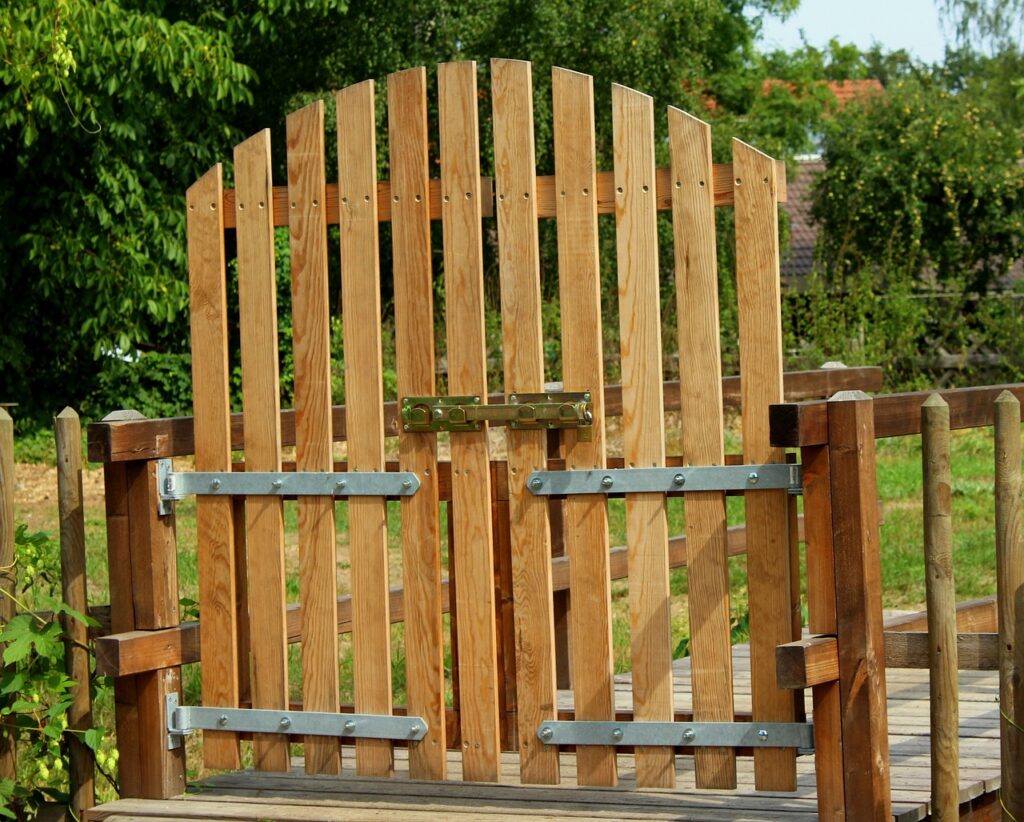
Maintenance And Upkeep Of Gates And Fences
Regular maintenance of gates and fences is essential for several reasons. It prevents wear and tear, protects against weather damage, and keeps your property secure. Ignoring maintenance can lead to costly repairs or replacements down the line. By investing a little time and effort into upkeep, you can save money and maintain your property’s value.
Wood Gates and Fences: Preserving Natural Beauty
Wood is a popular choice for gates and fences due to its natural beauty and versatility. However, wood is also susceptible to weathering, rot, and pest infestations. Here are some key maintenance steps for wood structures:
Inspect and Clean Regularly: Check for signs of damage, such as cracks, rot, or loose nails, and clean your wood gates and fences at least once a year with a mild soap solution to remove dirt and grime.
Apply Protective Coatings: To protect against moisture, UV damage, and pests, apply a waterproof sealant or stain every 2-3 years. This not only extends the life of the wood but also enhances its natural beauty.
Repair Damage Promptly: Address any damage as soon as possible to prevent further deterioration. This may include replacing damaged boards, tightening loose hardware, or filling cracks with wood filler.
Metal Gates and Fences: Combating Rust and Wear
Metal gates and fences offer durability and strength, but they require care to prevent rust and wear. Whether you have wrought iron, aluminum, or steel, these tips will help keep your metal structures in top condition:
Conduct Regular Inspections: Look for signs of rust, loose bolts, or other damage. Early detection is key to preventing major issues.
Clean with Appropriate Solutions: Use a mild detergent and water to clean metal gates and fences. For stubborn rust spots, a wire brush or sandpaper can be used to remove rust before applying a primer and paint.
Apply Rust-Inhibitor Coatings: After cleaning, apply a rust-inhibitor spray or paint to protect the metal from moisture and environmental elements.
Lubricate Moving Parts: Keep hinges and locks lubricated to ensure smooth operation and prevent rust.
Vinyl Gates and Fences: Low Maintenance but Not No Maintenance
Vinyl is often chosen for its low maintenance requirements, but it still needs some care to keep it looking its best. Follow these simple steps to maintain your vinyl gates and fences:
Regular Cleaning: A hose and a soft cloth or brush with a mild detergent are usually enough to clean vinyl surfaces and remove any buildup of dirt, algae, or mildew.
Inspect for Damage: Although vinyl is durable, it can crack or break under impact. Replace any damaged sections promptly to maintain the integrity of your fence or gate.
Avoid Harsh Chemicals: When cleaning, avoid using harsh chemicals that can damage the vinyl’s surface or color.
Maintaining gates and fences might seem like a daunting task, but regular upkeep is the key to ensuring they remain a valuable addition to your property. By dedicating a little time to maintenance, you can avoid costly repairs, enhance your property’s security, and maintain its aesthetic appeal. Remember, the specific maintenance requirements can vary based on the material and environmental conditions, so tailor your approach accordingly. With the right care, your gates and fences can serve you well for many years to come.
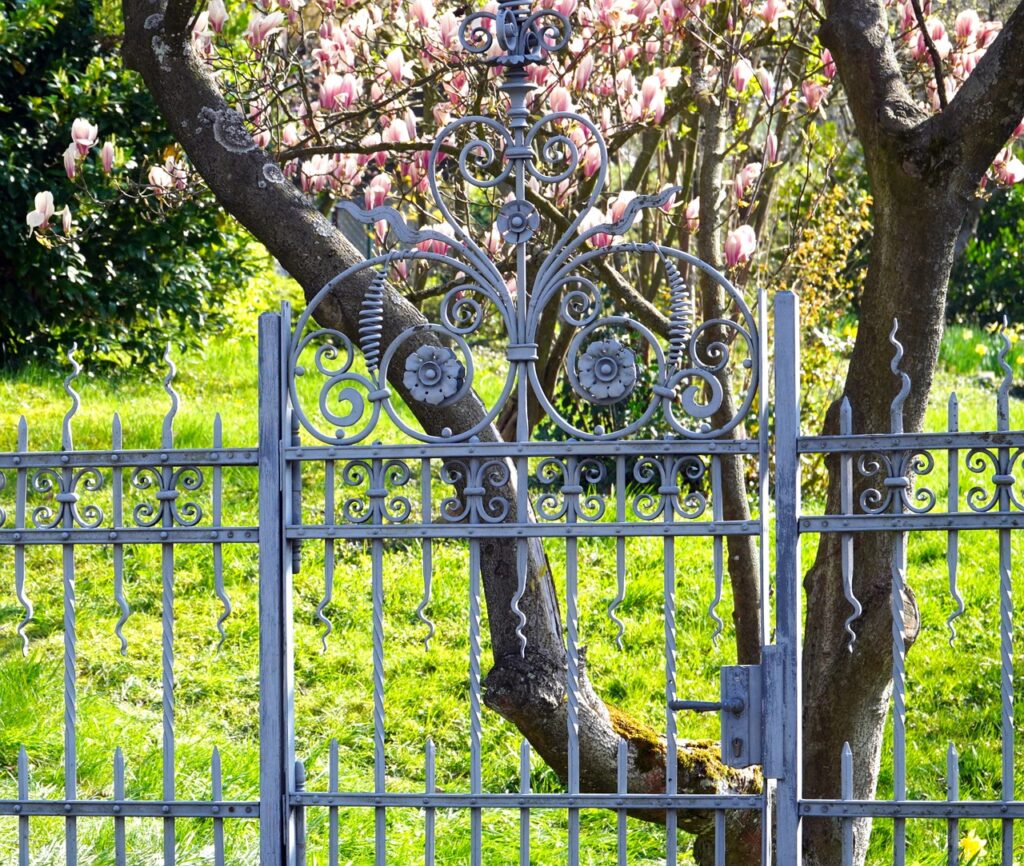
Legal And Neighborly Considerations In NZ
Before you begin the installation of your fence and gates, it’s a thoughtful gesture to have a chat with your neighbors about your plans. Engaging in this conversation isn’t just about being neighborly; it also paves the way for maintaining harmonious relations in the long run.
By discussing your intentions, you might find that your neighbors have valuable insights or suggestions that could enhance your project. More importantly, this proactive approach can prevent potential conflicts.
Should any disagreements surface despite your best efforts, remember that the Fencing Act serves as a reliable reference. It offers clear guidelines on matters related to shared fences and provides practical advice on how to settle disputes in a friendly and constructive manner.
FAQs: Fencing And Gates In New Zealand
Conclusion
Deciding on the right number of gates for your fence in New Zealand is a delicate balance between practicality, aesthetics, security, and adhering to local regulations. It starts with an in-depth look at your property’s layout to identify natural pathways and areas that might benefit from direct access, considering how the size and usage of your property affect these decisions.
Your personal needs and lifestyle also weigh heavily in this equation, whether it’s accommodating pets, facilitating guest movement during gatherings, or prioritizing security without sacrificing the visual appeal of your home. Moreover, understanding and complying with New Zealand’s specific fencing laws, particularly regarding shared boundaries and pool fencing, is essential to ensure your setup is not only effective but also legal.
Every property has its uniqueness, and by taking into account the specific characteristics of your home and how you live in it, while staying informed about local regulations, you can craft a fencing solution that enhances your home’s functionality, security, and aesthetic appeal in a way that’s perfectly tailored to your circumstances.
Find A Professional Fence Builder Near You!
- Farm Fencing Waikato
- Fence Builders Alexandra, Clyde & Cromwell
- Fence Builders Auckland
- Fence Builders Central Otago
- Fence Builders Christchurch
- Fence Builders Hamilton Waikato
- Fence Builders Invercargill
- Fence Builders Kapiti
- Fence Builders Lower Hutt
- Fence Builders Manawatu
- Fence Builders Palmerston North
- Fence Builders Queenstown
- Fence Builders Taupo
- Fence Builders Upper Hutt
- Fence Builders Wanaka
- Fence Builders Wellington
- Fencing Contractors Levin
- Fencing Contractors Napier
- Fencing Hastings
- Fencing Hawkes Bay
- Fencing Kerikeri
- Fencing Mangawhai
- Fencing Nelson
- Fencing New Plymouth
- Fencing Paihia
- Fencing Taranaki, New Plymouth
- Fencing Warkworth
About the Author:
Mike Veail is a recognized digital marketing expert with over 6 years of experience in helping tradespeople and small businesses thrive online. A former quantity surveyor, Mike combines deep industry knowledge with hands-on expertise in SEO and Google Ads. His marketing strategies are tailored to the specific needs of the trades sector, helping businesses increase visibility and generate more leads through proven, ethical methods.
Mike has successfully partnered with numerous companies, establishing a track record of delivering measurable results. His work has been featured across various platforms that showcase his expertise in lead generation and online marketing for the trades sector.
Learn more about Mike's experience and services at https://theleadguy.online or follow him on social media:

